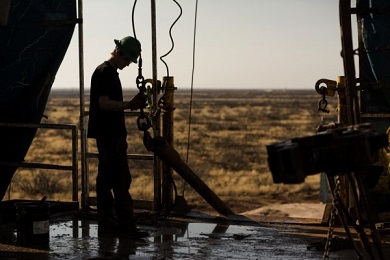Shale may not cut it when the world needs more oil – Shale cut oil - Arhive
Shale cut oil Shale cut oil Shale cut oil Shale cut oil Shale cut oil Shale cut oil Shale cut oil Shale cut oil
Shale may not cut it when the world needs more oil
by David Foxwell
 Interestingly for the offshore oil and gas sector – and the offshore supply vessel fleet that supports it – Saudi Aramco’s chief executive also believes that booming shale oil production in the US will not be able to prevent a supply shortage.In widely reported remarks, Saudi Aramco’s boss said the downturn in the oil price in the last three years had reduced investment in long-term exploration and development projects to a level that makes the long-term situation “worrying.” Mr Nasser was speaking at the World Petroleum Congress in Istanbul.For the time being the industry is struggling with oversupply of oil caused by shale oil production in the US and over-production by OPEC members, but Mr Nasser said he believed that the dearth of investment in recent years was worrisome because the world needs 20 million barrels a day of new production in the next five years to meet demand. “Investments in smaller increments such as shale oil will just not cut it,” he said.
Interestingly for the offshore oil and gas sector – and the offshore supply vessel fleet that supports it – Saudi Aramco’s chief executive also believes that booming shale oil production in the US will not be able to prevent a supply shortage.In widely reported remarks, Saudi Aramco’s boss said the downturn in the oil price in the last three years had reduced investment in long-term exploration and development projects to a level that makes the long-term situation “worrying.” Mr Nasser was speaking at the World Petroleum Congress in Istanbul.For the time being the industry is struggling with oversupply of oil caused by shale oil production in the US and over-production by OPEC members, but Mr Nasser said he believed that the dearth of investment in recent years was worrisome because the world needs 20 million barrels a day of new production in the next five years to meet demand. “Investments in smaller increments such as shale oil will just not cut it,” he said.
The International Energy Agency (IEA) has also expressed concern about the steep decline in exploration and production. As Dr Fatih Birol, the IEA’s executive director noted recently, “As the oil and gas industry refocuses on shorter-cycle projects, the need for policymakers to keep an eye on the long-term adequacy of supply is more important. Even with ambitious climate-mitigation goals, current investment activity in oil and gas will have to rise from its current slump.”
After two years of unprecedented decline, global upstream oil and gas investment is expected to stabilise in 2017. However, an upswing in US shale spending contrasts with stagnation in the rest of the world, signalling a two-speed oil market. At the same time, the oil and gas industry overall is transforming itself by delivering large cost savings and focusing more on technology development and efficient project execution.
As the IEA pointed out recently, the problem has been compounded by the fact that investors are going through a period of waning confidence with prices recently returning to levels not seen since early November. Brent prices have closed below US$50/barrel each day since early June and few investors expect a recovery anytime soon. The widespread interpretation of this is that investors believe, perhaps impatiently, that oil market re-balancing is taking too long with some calling for additional action by producers to speed up the process.
As the IEA noted, each month something seems to come along to raise doubts about the pace of the re-balancing process. This month, there are two hitches: a dramatic recovery in oil production from Libya and Nigeria and a lower rate of compliance by OPEC with its own output agreement. The second internal issue for OPEC is that its rate of compliance now appears to be slipping. While Saudi Arabia continues to deliver on its promise to cut output, several other producers have not so far fulfilled their commitments. However, the output agreement runs until March 2018, and success is judged over the whole period rather than in one month.
“The recent price weakness may lead the US shale patch to reassess its prospects,” the IEA said. “Financial data suggests that while output might be growing, profits are not and company executives are saying oil prices need to be around US$50/bbl to maintain production growth. WTI values have not been consistently above that level since late April. Meanwhile, we saw a record twenty-three consecutive weeks of rising drilling activity grind to a halt, although modest growth has resumed. Such is the resilience of the US shale sector that we should be careful to pronounce that its expansion will slow, however it could be that the recent exuberance is being reined in.”
Meanwhile, preliminary indications suggest that global demand growth, after falling to a three-year low in the second quarter of 2017, may have begun to pick up, although the IEA says we need to wait a little longer to confirm if the process of rebalancing has actually started.
A drop in upstream oil and gas activity and the recent slowdown in the sanctioning of conventional oil fields to its lowest level in more than 70 years may lead to tighter supply in the near future, the IEA said. “Given depletion of existing fields, the pace of investment in conventional fields will need to rise to avoid a supply squeeze, even on optimistic assumptions about technology and the impact of climate policies on oil demand. The energy transition has barely begun in several key sectors, such as transport and industry, which will continue to rely heavily on oil, gas and coal for the foreseeable future.”
